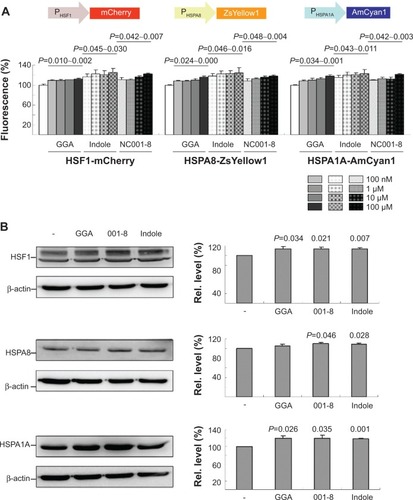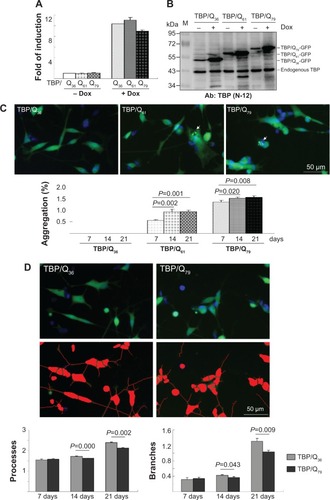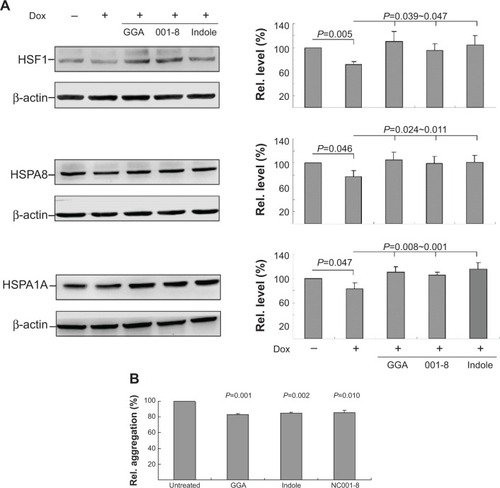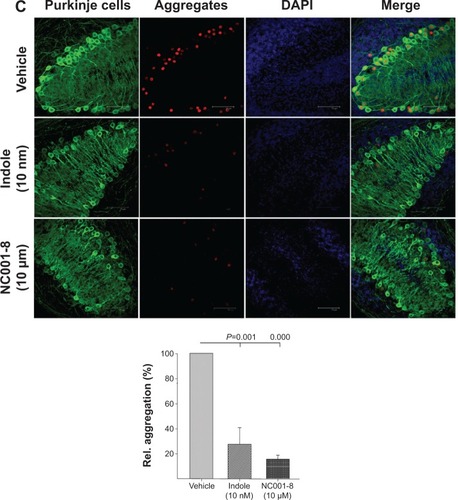Figures & data
Figure 1 Indole and derivative NC001-8 and cytotoxicity.
Abbreviations: GGA, geranylgeranylacetone; IC50, inhibitory concentration at 50% level.

Figure 2 Enhancement of chaperone expression by indole and NC001-8 in HEK-293 cells.
Abbreviations: GGA, geranylgeranylacetone; 001-8, NC001-8; HSF1, heat shock transcription factor 1; Rel., relative; HSPA8, heat shock 70 kDa protein 8; HSPA1A, heat shock 70 kDa protein 1A.

Figure 3 SH-SY5Y cells with induced TBP/Q36~79-GFP expression and neuronal phenotype.
Abbreviations: Dox, doxycycline; TBP, TATA box binding protein; GFP, green fluorescent protein; mRNA, messenger RNA; Ab, antibody; LSD, Fisher’s least significant difference.

Figure 4 Enhancement of HSF1 and chaperone expression and reduction of aggregation by indole and NC001-8 in neuronal SH-SY5Y TBP/Q79 cells.
Abbreviations: Dox, doxycycline; GGA, geranylgeranylacetone; HSF1, heat shock transcription factor 1; HSPA8, heat shock 70 kDa protein 8; HSPA1A, heat shock 70 kDa protein 1A; Rel., relative; GFP, green fluorescent protein; HCA: high content analysis; 001-8, NC001-8; LSD, Fisher’s least significant difference.

Figure 5 Indole and NC001-8 promoted neurite outgrowth and reduced aggregation of Purkinje cells in spinocerebellar ataxia type 17 mouse cerebellar primary and slice cultures.
Abbreviations: IP3R-1, inositol 1,4,5 trisphosphate receptor type 1; 1TBP18, mouse monoclonal antibody to TATA binding protein (TBP); Rel., relative; DAPI, 4′,6-diamidino-2-phenylindole.


